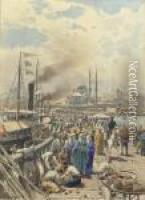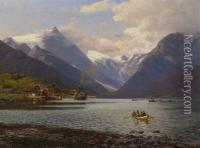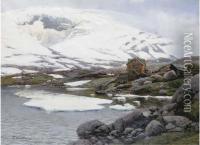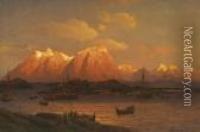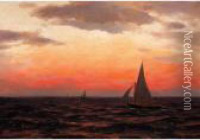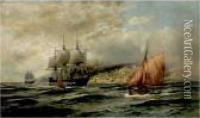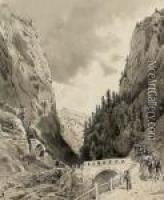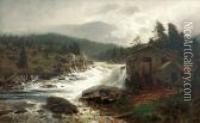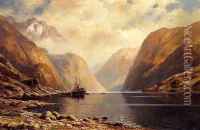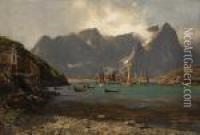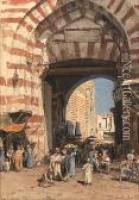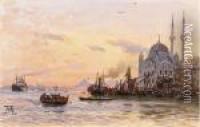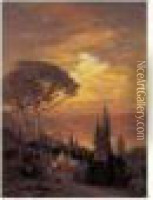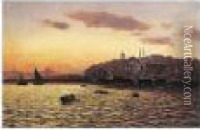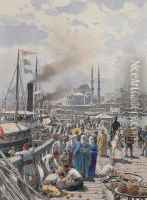Themistocles Von Eckenbrecher Paintings
Themistocles von Eckenbrecher was a German landscape painter, who was born on 17 November 1842 in Athens, Greece. His parents were German, and his father was a successful architect and engineer, which likely influenced Themistocles's interest in the structures and landscapes that would later feature prominently in his work. Von Eckenbrecher is known for his detailed and atmospheric depictions of landscapes, seascapes, and cityscapes, which often included architectural features.
Raised in the traditions of German Romanticism, von Eckenbrecher studied art in Düsseldorf, which was one of the most important art centers in Germany during the 19th century. He was a student of Oswald Achenbach, who was a significant landscape painter of the time. Von Eckenbrecher was also influenced by the Norwegian painter Hans Fredrik Gude, who taught at the Düsseldorf Academy.
Throughout his career, von Eckenbrecher traveled extensively. He visited Norway and Italy, and he also explored much of the Middle East, including Palestine, Syria, and Egypt. These travels had a profound impact on his art, as he absorbed the different qualities of light and atmosphere, as well as the varied landscapes and architectural styles that he encountered. His works often reflect a meticulous attention to detail and a strong sense of place.
Themistocles von Eckenbrecher's paintings were exhibited widely during his lifetime, including at the Berlin Academy and the Great Berlin Art Exhibition. His works are characterized by precise brushwork, a clear color palette, and a serene, often contemplative mood. He was also known for his etchings and lithographs, which, like his paintings, were highly detailed.
Von Eckenbrecher passed away on 4 December 1921 in Goslar, Germany. Although not as widely known today as some of his contemporaries, he remains a respected figure in the history of 19th-century German landscape painting. His artworks can be found in various art collections and museums in Germany and beyond.
